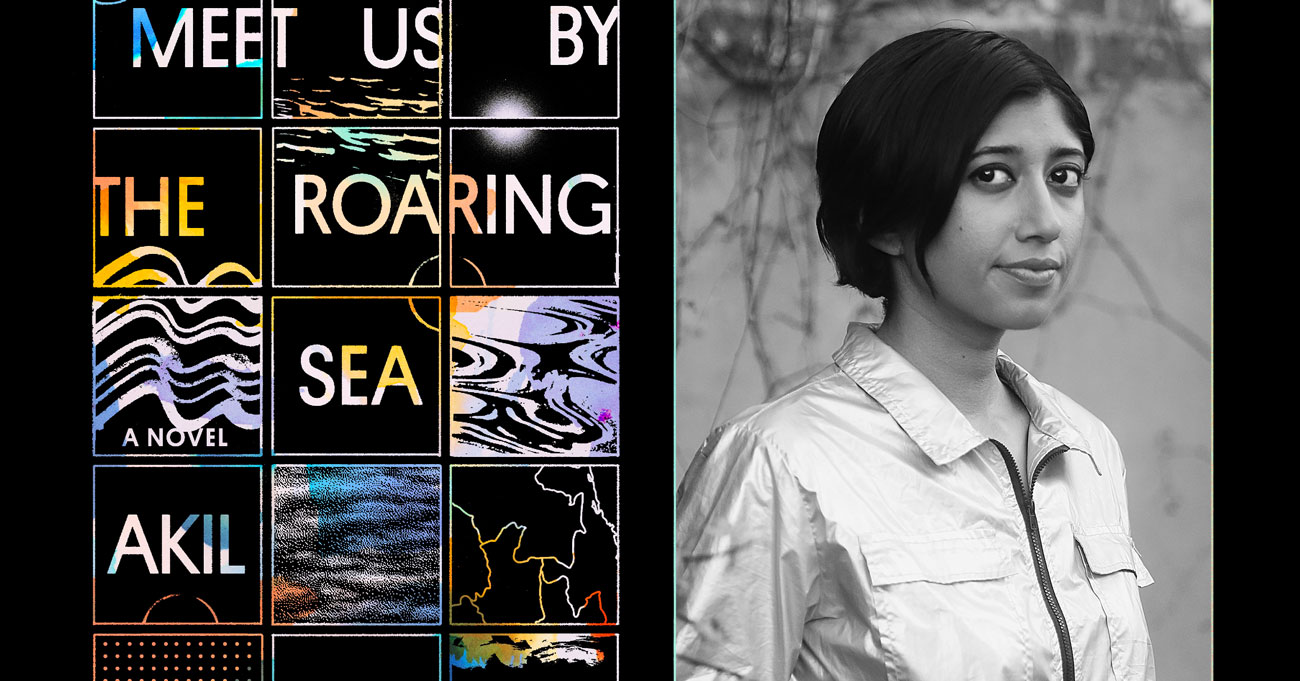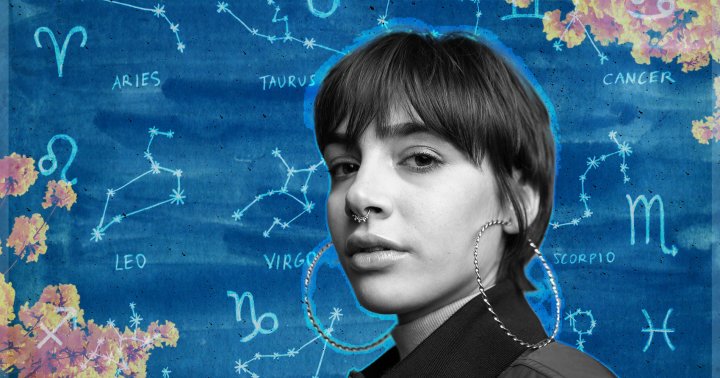The Border States of Compassion
Akil Kumarasamy’s debut novel asks how we can truly understand another’s pain—and at what cost. The post The Border States of Compassion appeared first on Tricycle: The Buddhist Review.

In Akil Kumarasamy’s debut novel, Meet Us by the Roaring Sea, an unnamed AI programmer begins translating a Tamil manuscript in the aftermath of her mother’s death. The manuscript, written in the late 1990s, follows a cohort of young female medical students living on the edge of the Sri Lankan civil war who attempt to develop an ideology of “radical compassion.” As the programmer delves deeper into the students’ collective treatise, she slowly becomes unhinged by the question of what it means to care for another.
Kumarasamy grew up in a South Asian community in an area of New Jersey formerly known as Dismal Swamp, and from a young age, she was interested in questions of compassion and how communities can care for each other after catastrophes. Her short story collection, Half Gods, directly explores the impact of the Sri Lankan civil war on South Asian diasporic communities, but in Meet Us by the Roaring Sea, the war takes on a more spectral presence. The novel swirls between a near-future Queens and the shores of South India, slipping through time and space—and between consciousnesses. Characters investigate how to take on another’s suffering, whether through self-inflicting pain or through physically extracting and ingesting others’ traumatic memories. Along the way, Kumarasamy offers a poignant and at times unsettling meditation on friendship, climate change, artificial intelligence, grief, and memory.
Tricycle spoke with Kumarasamy about the novel, the border states of compassion, the ethics of translation, and how literature can help us bear witness to suffering.
To start, can you tell us about your childhood growing up in a South Asian diasporic community? I grew up in New Jersey. My parents came from South India, and my mother was really influenced by Zen Buddhism. She was particularly drawn to Thich Nhat Hanh’s teachings on using Buddhist practice to navigate the Vietnam War and using compassion to enact social change. I also grew up reading the Buddha manga series, by Osamu Tezuka, so from an early age, I was learning about how the Buddha challenged the ideas around him, as well as how compassion and social justice can come together.
At the same time, I grew up in the South Asian diaspora, so there were a lot of interfaith conversations happening. People were practicing Buddhism and Hinduism simultaneously. From a young age, I practiced Vipassana meditation and was surrounded by different forms of religious practice. All of these practices and conversations affected my formation in how I think about writing and engaging with the world.
Can you share more about the relationship between your practice and your writing? How has that interfaith grounding influenced your approach to your work? A big question in my work and in my life is what we do with suffering. How do we reach out to other people as we navigate the seas of suffering? Zen Buddhism has influenced how I approach this question, particularly in thinking about impermanence and interconnectedness, and this shapes how I form books.
My first book of short stories, Half Gods, deals with the aftermath of the Sri Lankan civil war and asks how different diaspora communities can heal and connect with each other. In my new novel, Meet Us by the Roaring Sea, my main question was how we can practice compassion in modern society. Both books are concerned with how we can care for others when we ourselves are deeply suffering. These questions also show up in my own practice, particularly in thinking about temporality, death, and grief.
In the new novel, an AI coder begins translating a manuscript that revolves around the notion of radical compassion. Can you say more about the idea of radical compassion? In the novel, the main character has just lost her mother. There’s something about death that just cracks open reality. It makes you realize the illusion of everything, and it forces you to question how you’re engaging with the world. As she is grieving, she starts translating a manuscript about a group of medical students who are coming up with a new idea of radical compassion.
The students are living through a drought at the edge of a war, so they’re suffering themselves. The only way for them to leave their own suffering is to reach out to other people, to see that they are connected to the refugees coming to their shoreline, and to see that their suffering is not a singular thing but something larger.
The Zen Buddhist priest Joan Halifax talks about the edge states of compassion. For example, let’s say someone falls onto the train tracks and someone else jumps to try to save them. If the second person lives, we would say, “Oh my gosh, you were so compassionate, you jumped to save them.” But if they die trying to save the person, then we would say, “You’re delirious. You’re crazy.” So there’s this border state of compassion. Compassion can have a turbulent edge to it.
I was interested in thinking about characters being pushed to these edge states—pushed to the point where compassion can become self-destructive. I wanted to explore the borders between people and also how comfortable we are in being open to other people’s suffering.
Throughout the book, the medical students veer toward different edge states: For some, radical compassion becomes self-destructive; for others, it turns to cruelty. How do the students navigate these dangers, particularly in finding a balance between self-mortification and total hedonism? In the inner manuscript, the medical students are trying to figure out what it means to care for each other. They’re constantly negotiating the balance of how to open themselves to the suffering of others in a meaningful way.
But within the collective, there are three schools of radical compassion. Some students self-inflict pain, seeing how much they can tolerate as a way to open themselves up. Some starve themselves and give away food. All of them have this goal of awakening and collective liberation. But they approach what it means to be compassionate very differently.
We’re not separate from the pain of others, and the book is trying to show that entangling yourself with the suffering of others has a cost. Characters lose things: physical objects, houses, belongings. Is that part of compassion? To gain this understanding of another’s pain, do you have to shed something? There are a lot of burnings in the book, as well as rebirths. Characters are constantly negotiating these borders.
One question the novel raises is how you can come back after entering into another’s suffering. What is the process of return? Has writing the book given you any insight on this question? When you witness something, are you forever altered? Can you go back to a time before you’ve witnessed something? In the outer story, witnessing becomes embodied when characters physically ingest other people’s memories and traumas. These experiences become part of them in a physical way. Can they return to what they were like before?
In some ways, you can’t fully return to the place that you used to be. Now that you’ve seen something, it has changed you, and you cannot go to that earlier version of yourself. I think this goes back to the idea that there is a cost.
These characters are forced into situations where they finally have to see, look, and break down the veil that’s in front of them and reach out. I don’t think there’s any going back from that.
I’m curious as to how you view the role of literature in relation to the act of witnessing, particularly in your choice of pronouns. How can literature help us bear witness to another’s suffering? In this book in particular, I was very conscious of the pronouns I chose to use. The inner manuscript is written in the first person plural, and the outer story is written in the second person. They’re unusual points of view, and both call for the reader’s participation. I think the second person invites the reader to step into the narrative space, which is almost a liminal space between first and third person. The book is addressing you. With the first-person plural, it feels like you could be part of that we, too.
“To gain an understanding of another’s pain, do you have to shed something?”
For me, literature is like an opening. It can open someone’s mind to other ways of thinking, other ways of approaching the world, or seeing people in their lives. Literature can create a wedge in someone’s mind, and that can be an opportunity for someone to think differently and possibly to act differently in the world.
I think literature is the closest you can get to someone’s psyche. Reading a novel, you get to see a character in the whole span of their lives: the public moments, but also the private moments you can’t normally see. If we got to see all these different facets of people, we might feel more compassionate toward them than we do toward the limited versions we get to see in passing.
You also touch on the power of art in moving through grief: Two of the characters take up writing or sculpture after losing their parents. Can you say more about how creative practice helps them in navigating these losses? The main character studied Tamil in college. After her mother dies, she begins translating as if it’s a road to salvation, as if the manuscript is helping her climb out of her grief. For her, the act of translation is like an act of resuscitation, bringing these young women back from anonymity.
The character’s childhood friend Sal has also just lost her parents, and she uses art as a vehicle of social change and social justice. She has all this pain, anger, and grief; what is she going to make of it? Her instinct is to use these feelings as a way to create something larger that might speak to others.
I think, in some ways, art is this weird transformative vortex where you put your anger, grief, sadness, happiness, everything, and through this alchemy machine, you’re able to mold these feelings into something else. Art can be a way to channel grief and reach other people in the process. It’s at once an act of reaching out and an act of recognition: I see your grief, I hear it, I feel it. Reaching out to other people can be a way to rescue yourself, too.
One of the questions that the main character wrestles with is whether the women in the manuscript want to be resuscitated or brought into the English language. How do you examine the ethics of translation, particularly the ethics of sharing a story that isn’t your own? This is a tricky line for her, because by bringing these young women into English, she’s broadening their audience so more people can read about them. But the text itself is a very anticolonial text, and the women are specifically pushing against the British Empire and its influence on Indian society. So it does feel like this monstrous thing: These young women might not want to be in English, but at the same time, now their message has a broader audience.
I think this gets to the moral question of translation. Sometimes, a text might not be meant for a larger audience. Maybe it’s not meant to be read by everyone. And maybe there’s certain knowledge in a text that is not meant to be shared. By sharing this knowledge, there’s a possibility that it will be taken and used and commercialized.. So there is a strange trade-off in translation.
How do these questions impact how you think about your audience? I try to be aware of the fact that the English language has so much power. Only three percent of literature from other languages gets translated into English. I am writing in English, and that’s probably the language I will continue to write in. I wanted the book to wrestle with the currency of the English language. What does it mean to be writing in this language of power?
The main character is translating a manuscript from Tamil, and the medical students draw from Tamil texts in crafting their notion of radical compassion. Can you share more about how Tamil literature influences your work? When we think of the classical languages of South Asia, we tend to talk about Sanskrit, but we don’t often talk about Tamil. Many of the ancient Sanskrit texts are about gods, but Tamil texts are often about people: people who are lovesick and go through all the stages of love and heartbreak. So I was very interested in thinking about the lives of everyday people, using these Tamil texts as a launching point.
In ancient Tamil literature, there are the Five Great Epics, and two are by Tamil Buddhist writers. One of these epics, the Manimekalai, is about a Tamil Buddhist nun. She was a fiercely independent woman, and she was really influential in how I envisioned the young women in the manuscript. The young women draw from the ancient texts, but they’re also building from them and taking them into their present moment. In writing this book, I was reaching back into ancient Tamil Buddhist texts and bringing them into the present.

 Konoly
Konoly 
































